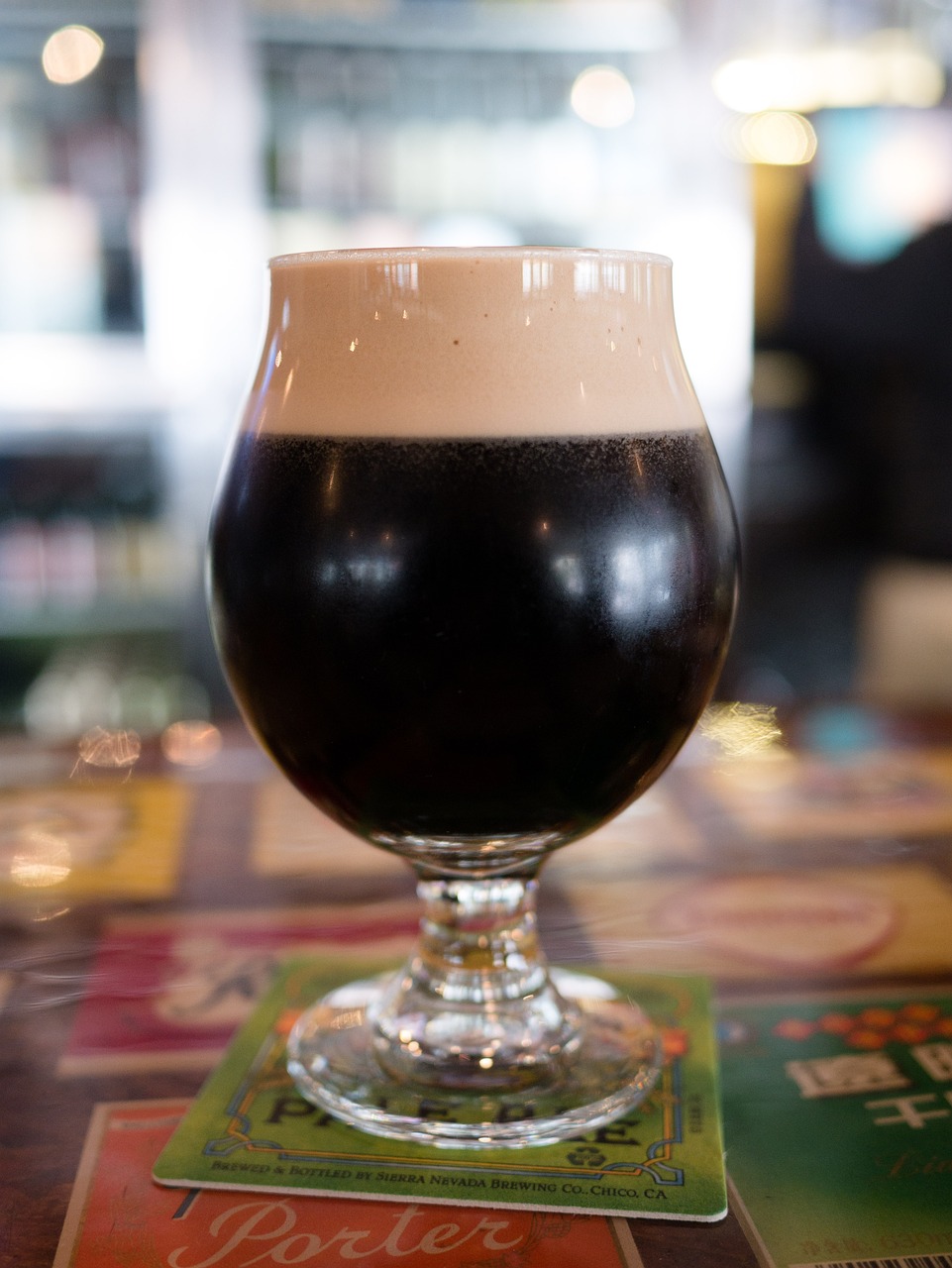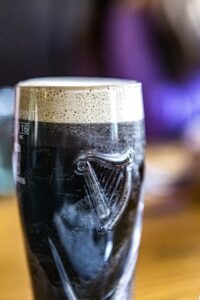
Who doesn’t love stout beer? Those warm, toasty notes warm you up like nothing else, especially when it’s a bit cold outside. Just imagine it: sitting in your favourite cozy armchair in front of a roaring fire, listening to the rain lashing and wind howling outside while you sip on a dark stout beer and take it all in. There’s nothing better, right?
Perhaps this is why Australians are enamoured with stout beer, both the bought-from-the-brewery kind and the homebrew that you’re here to learn about. So let’s dive in and learn about this special beer!
What is the history of stout beer?
Stout beer has been around for over 300 years. It was originally derived from porter beer, which is an English style that originated in London in the early 1700s. At around 6.5% alcohol, porter was a strong beer, and it was popular with working class people, especially those who worked on the docks and in the gritty city. The high alcohol level helped keep the beer fresh and tasty, even if it had to be stored for a long period, which made it perfect for quenching the thirst of the hard working English lads and lasses.
Many different breweries produced porters, and each had their own style that introduced difference characteristics to the beer. One such early brew was called the “single stout” – a dark, roasty beer with a rich and strong flavour.
Over time, brewers changed the style and flavour of their porters, and the beer became more and more popular all over the United Kingdom, even spreading to Ireland. By the time 1776 rolled around, the Irish were brewing their own take on porter: the famous dark, malty Guinness stout.
Around 40 years later, the Wheeler drum kiln was invented, and Guinness used this kiln to brew their stout with ‘black patent malt’. This special process made Guinness’ stout beer less sweet and emphasised the roasted flavour. This delicious brew became the famous Guinness dry stout.
What types of stout beer and porters are available today?
Today, there are two prominent types of dark ales: stouts and porters. These beers share a common history but have distinct characteristics. Porters have a rich, dark brown color and exhibit flavors of chocolate, coffee, and caramel. However, they lack the intense roasted barley taste found in the darker stouts.
According to the US Beer Judge Certification Program, stouts are very dark, roasty, bitter, and creamy ales. On the other hand, porters are substantial, malty, dark ales with a complex and flavourful character. If you’re interested, check out our selection of homebrew stout recipes available online.
So, what are the key stout styles available today? With a variety to choose from, it can be overwhelming. Let me highlight a few that I particularly enjoy and explain why:
Milk stout
Also known as ‘sweet stout,’ this variety contains lactose, which adds body, smoothness, and sweetness to the beer. Despite its black appearance, it surprises with a creamy, malt character and a delightful chocolate and caramel flavor. Interestingly, milk stout originated when English workers added milk to their stout for extra nutrition.
Irish stout

When you order an Irish stout in a pub today, you’ll receive
a black beer with a subtle ruby hue. It offers a full-bodied
and dry taste, derived from dry-roasted barley and roasted
malt aromas. Medium to medium-high hop bitterness is
characteristic of Irish stout, and the head should have a
smooth, creamy white appearance, thanks to nitrogen gas
taps.
American stout
In the 1970s, several independent American brewers decided to try their hand at brewing stout after enjoying it abroad. One of the best examples of this true American West Coast-style stout is the Sierra Nevada Stout, which remains popular to this day. Pitch-black in color and generously hopped with American Cascade hops, this creamy and robust dark malted beverage boasts aromas of coffee and dark chocolate. It’s a stout that can be enjoyed year-round.
Oatmeal stout
Oatmeal stout, often dark brown or black, incorporates malted oats into the brewing process, resulting in a soft and creamy mouthfeel, along with a distinct nutty flavor. It offers a smooth roasted malt character, delightful malt aromas, and falls into the low-to-medium alcohol range, making it a versatile beer choice.
Imperial stout
As one of the darkest stout styles, Imperial Stout is renowned for its intense flavor and high alcohol content, typically around 9%. The elevated alcohol content contributes to sweeter notes of dark chocolate and coffee. This stout style is also known as Russian Imperial Stout because the English exported it to the Baltic states. Russian Empress Catherine the Great was said to be quite fond of this beverage. Initially, the long sea journey caused the beer to spoil, but the ingenious English brewers solved this issue by increasing the alcohol content. Problem solved! Britannia rules the waves.
Do these descriptions make your taste buds tingle? They certainly do for me, and I believe a delicious stout brew is in my near future!
In keeping with the tradition of the finest dark beers, check out these stout beer recipe kits:
And as always, happy brewing!
